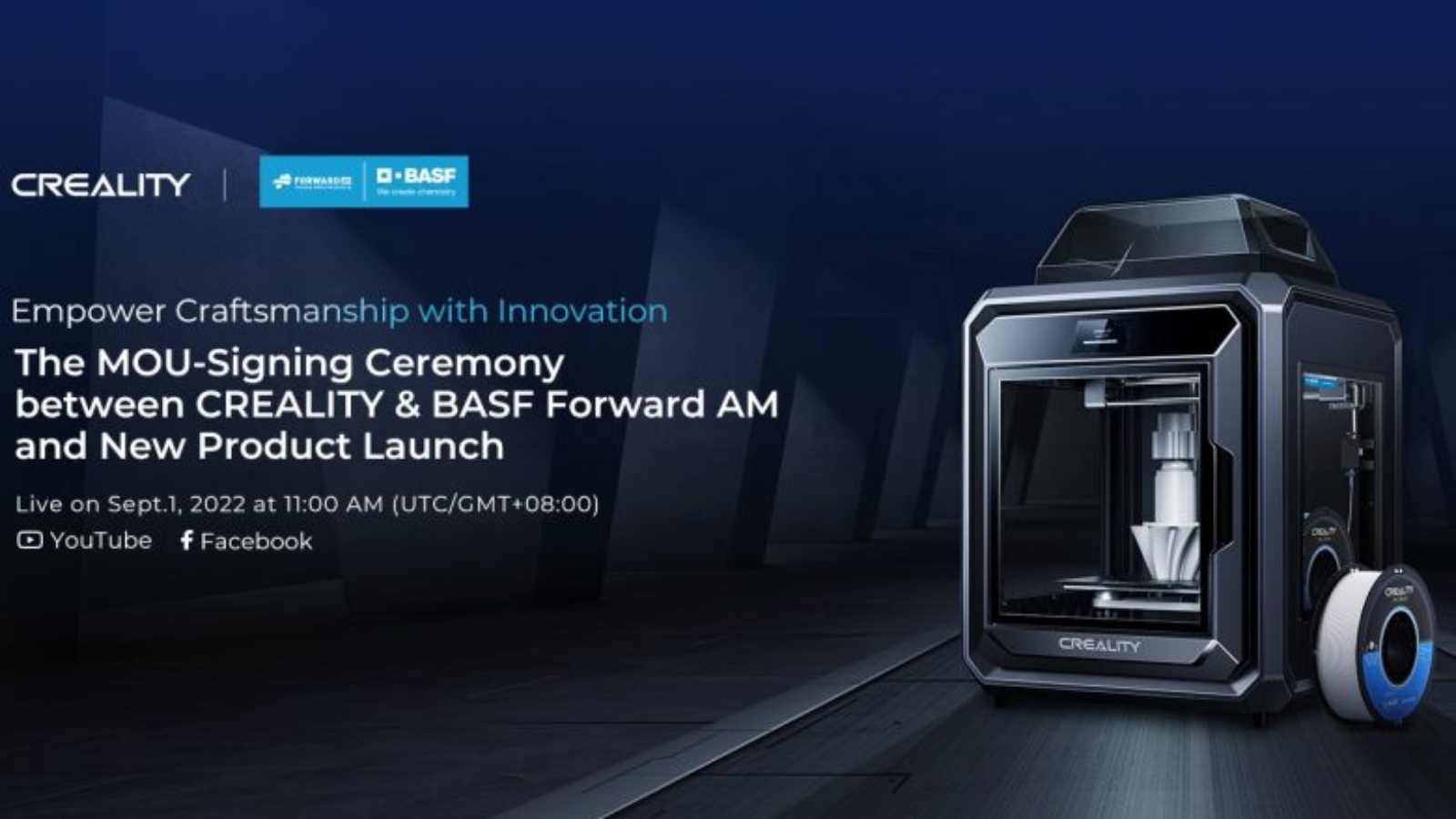Creality, a global pioneer in 3D printing, has partnered with Forward AM, a brand of BASF, to deliver professional-grade additive manufacturing solutions to the Chinese market. The MOU-signing ceremony will be held on 1 September, at TCT Shenzhen, China. Alongside the ceremony, Creality will launch the Sermoon D3, the latest addition to the fully-enclosed 3D printer lineup, and co-launch the HP-ULTRA with Forward AM, a high-end filament series specifically designed for Creality 3D printers.
The strategic partnership combines Creality’s specialties in 3D printing machinery and Forward AM’s materials technology – creating a synergy that expands the application scenarios of the professional-grade 3D printers. The partnership will bring cost-effective 3D printing solutions, including machinery, materials, and software, to professional and industrial clients.
Manufacturing on Demand
Fred Liu, Co-founder and Executive Director of Shenzhen Creality 3D Technology, and Dr. Chen Li, Head of Business Management and Operations, at BASF 3D Printing Solutions Asia Pacific, will deliver speeches and sign the MOU at the event.
Following the release of the CR-5 Pro, the Sermoon D3 is Creality’s latest effort to expand its footprint into the professional and industrial market. The Sermoon D series is built for industrial design and offers powerful productivity in prototyping, jigs, and fixture-making, as well as design verification. The Sermoon D3 will feature industrial-grade stability and will allow users to control and monitor multiple 3D printers simultaneously – effectively scaling up manufacturing production.
HP-ULTRA filaments in PLA and ABS are co-developed by Creality and Forward AM. It is part of Creality’s “Better Filament Plan” to collaborate with market leaders to provide users with high-quality filaments tailor-made for Creality’s 3D printers.
You might also like:
OC-ALC and AFLCMC open second REACT lab with GE: The Pacer Edge Program is a partnership between government and industry designed to provide cutting-edge technology that increases production speed and reduces the cost of sustainment by leveraging additive manufacturing to produce critical aircraft and engine components that are safe, suitable, and reliable. The program’s goal is to increase Air Force weapon system readiness by combating diminishing sources of manufacturing, supply, and repair.
* This article is reprinted from 3D Printing Media Network. If you are involved in infringement, please contact us to delete it.
Author: Edward Wakefield


Leave A Comment